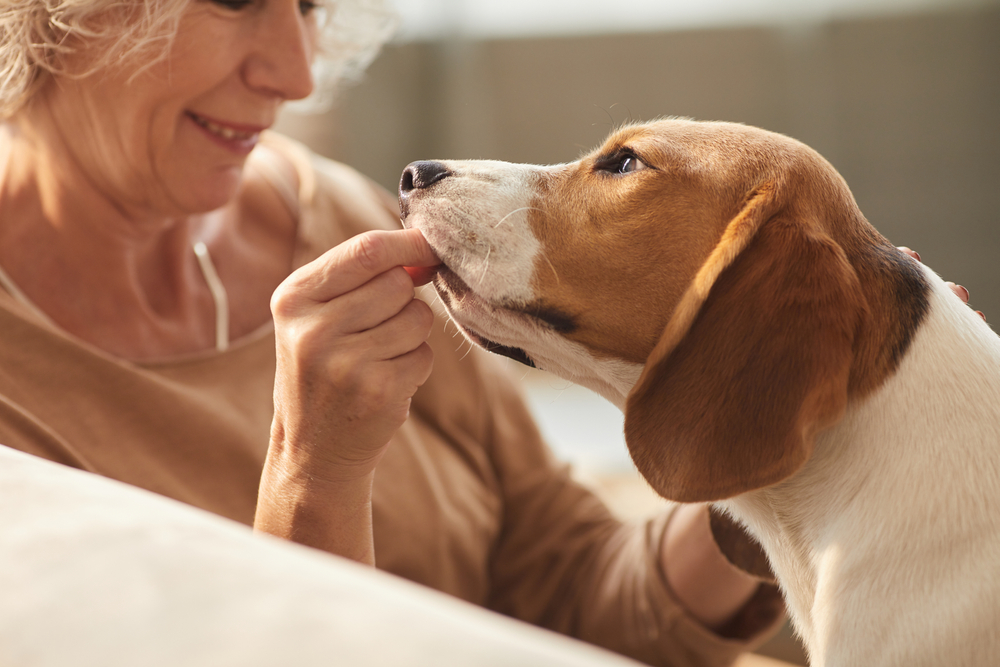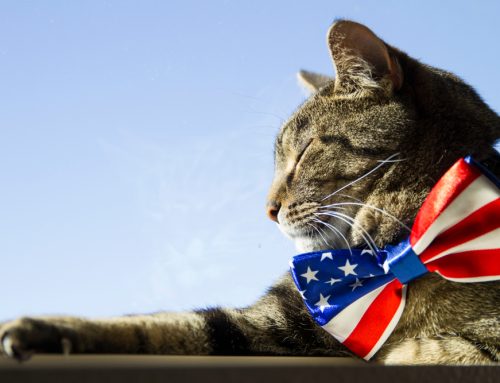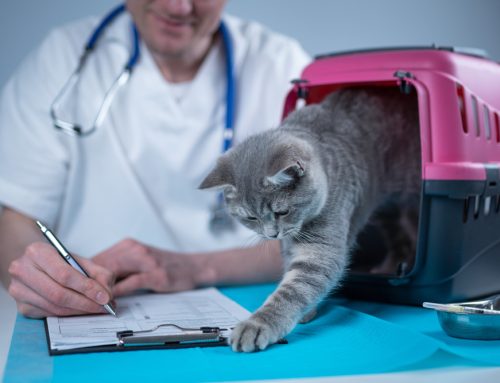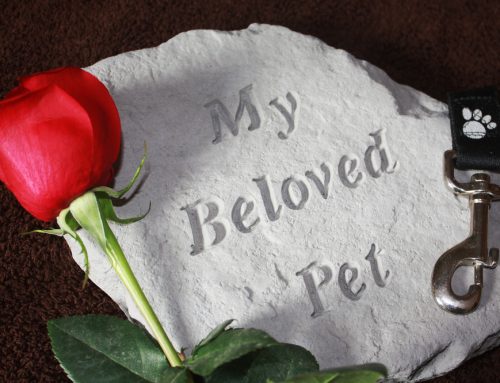If your pet misbehaves during grooming, hates having their nails trimmed, or hides when it’s bath time, it may not be because they’re stubborn—instead, they may be frightened, uncomfortable, or stressed.
Fear Free handling and care techniques are a simple and effective way to help your pet feel safe and confident during routine grooming tasks. The Veterinary Behavior Solutions team has compiled its top five tips for creating a low-stress grooming experience for your four-legged friend.
#1: Learn how to recognize common pet stress signs
Some pets make their fear, anxiety, and stress obvious by physically struggling, hiding, or defensively biting and scratching. Others, however, convey their stress through subtle signs—some of which make them seem cooperative and docile. Knowing how to interpret your pet’s non-verbal communication will help you shape their grooming experience and avoid worsening their fear.
Common signs of stress may include:
- Crouching or low body posture
- Freezing or stillness
- Whale eye (i.e., visible white of the eye) or dilated pupils
- Panting or drooling
- Flat ears
- Shaking as if wet
- Yawning
- Restlessness
- Food refusal
- Ignoring known commands (e.g., “Sit,” “Down,” or “Come”)
- Attempting to flee
- Hiding
- Urinating, defecating, or expressing anal sacs
- Biting or swatting at grooming tools
- Biting or scratching directed at their owner
If your pet shows any signs that they are uncomfortable with the grooming situation, then Fear Free strategies are recommended. Ignoring stress signs—including seemingly cooperative behaviors like complete stillness—can lead to escalating anxiety, worsening behavior, or injury to you or your pet.
#2: Acclimate your pet to handling and grooming tools
Grooming tasks are unnatural for pets and can be perceived as threatening. Keeping this in mind can help you create a safe and comfortable experience for your furry friend. Here’s how to build confidence and comfort for your pet.
- Physical restraint and manipulation — Lifting, holding, and handling your pet for grooming can cause them to feel vulnerable or endangered. Reduce their anxiety by pairing gentle touch with high-value food rewards. Begin with the areas where your pet enjoys being touched or petted (e.g., behind the ears, on the chest) and gradually work toward more sensitive areas such as the belly, feet, and tail.
- Unfamiliar tools, smells, sounds, and sensations — Grooming is a sensory experience for pets. In addition to physical touch, there are strange objects (e.g., brushes, combs), fragrances, and sensations (e.g., hair-pulling, water sprayers, liquid ear cleaner) that can overwhelm your pet’s senses and trigger a flight or fight response. Introduce these items slowly and gently, letting your pet see and sniff them before use. When possible, begin by grooming less sensitive areas such as your pet’s back legs or chest before moving to their feet, groin, tail, ears, or face.
#3: Use Fear Free principles to plan your pet’s grooming session
Replacing your pet’s negative emotional reactions with pleasant or neutral responses requires patience and preparation, but the end result—a calm and cooperative pet—will save you both time and stress in the long run. Here are some basic tips to structure your anxious pet’s grooming sessions or successfully introduce grooming to a puppy or kitten.
- Have a plan — Set a small achievable goal for each session. For example, trim one toenail or look inside your pet’s ears without triggering stress. With success and time, these goals can expand to include the entire task.
- Exercise your pet — Take your dog on a long walk or play with your dog or cat to burn off excess energy before grooming. Exercise is a natural stress reliever, and the associated endorphins may soothe or reduce grooming-related anxiety.
- Gather your supplies — Have everything ready and within arm’s reach before you begin. Ensure you have lots of high-value treats on hand to reward and preoccupy your pet.
- Use a non-slip mat — Slick bathtubs, tables, and floors can lead to injury and make pets feel out of control. Install a shower mat or cover slick surfaces with a yoga mat.
- Keep sessions short — When possible, limit your grooming sessions to only a few minutes—especially if you’re trying to help your pet overcome fear. Lengthy sessions can increase your pet’s anxiety and reduce their cooperation for future sessions. For unavoidable tasks (e.g., a medicated or de-skunking bath), use positive distractions such as soft food spread on a silicone treat mat to preoccupy your pet.
#4: Use high-value rewards to build positive associations for your pet

Food rewards are a fast and effective way to acknowledge and reinforce good behavior and create positive emotional responses to new experiences, places, and objects. Some of our favorite Fear Free food rewards include small soft training treats and spreadable foods such as canned pet food, xylitol-free peanut butter, almond butter, plain nonfat yogurt, cheese spread, canned tuna, and lickable pureed treats for dogs and cats. For long-lasting enjoyment, spread these foods on a silicone treat mat or smear them inside a bowl or coffee cup. If your pet isn’t motivated by treats, reward them with a favorite toy, action (e.g., belly rub), or game.
#5: Know when to seek professional help for your pet
If your pet experiences severe stress during grooming, consult your veterinarian to rule out underlying medical causes such as pain or illness. If your pet is otherwise healthy, Veterinary Behavior Solutions can design a personalized treatment plan to help your pet cope with or overcome their fear through anxiety-reducing medications and supplements and a structured training program (i.e., desensitization and counterconditioning). Contact our team to schedule an appointment or to obtain additional information.







Leave A Comment